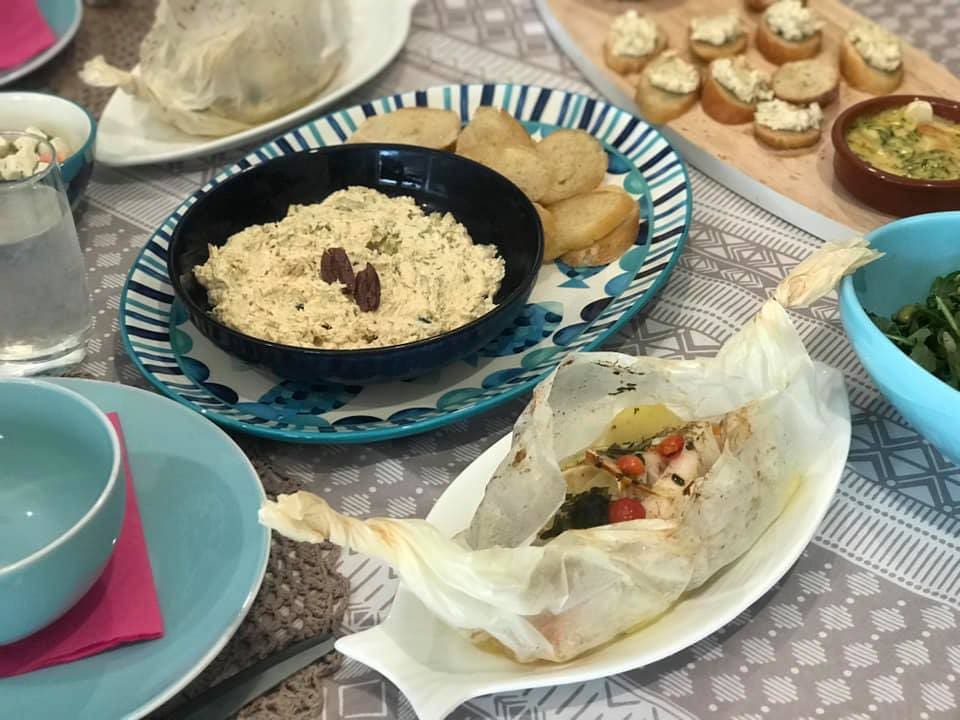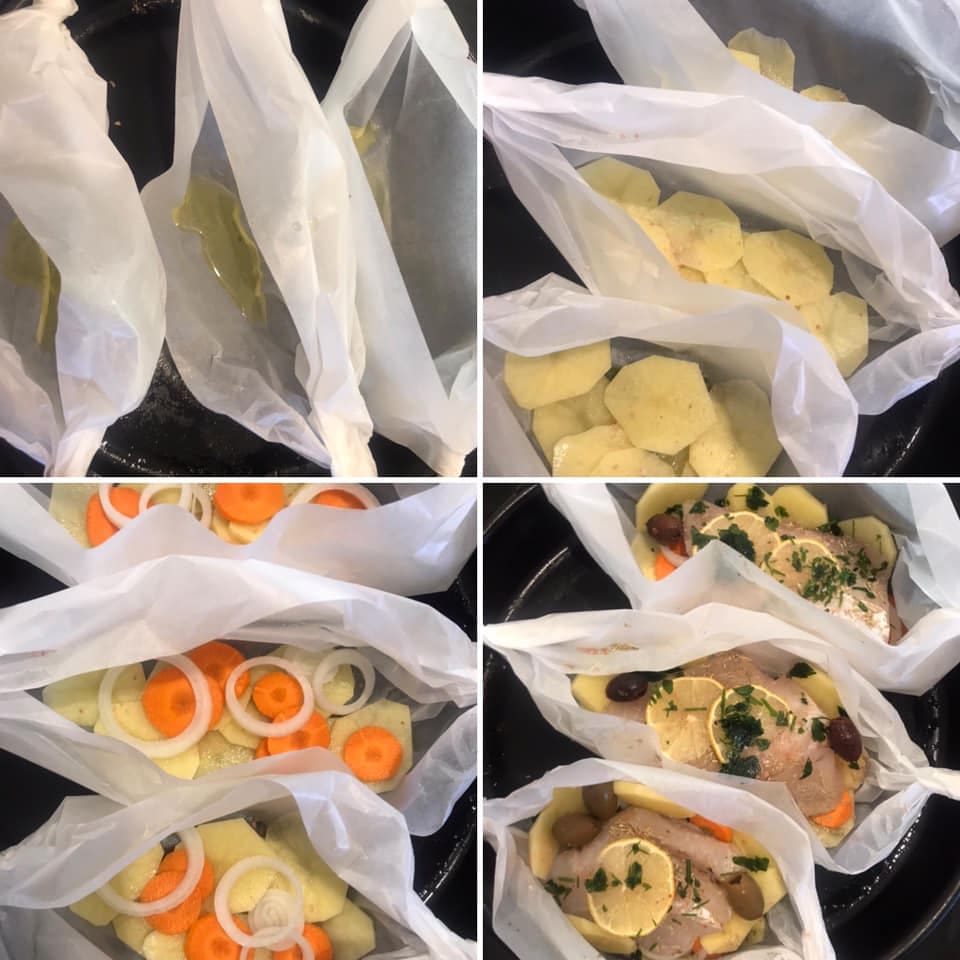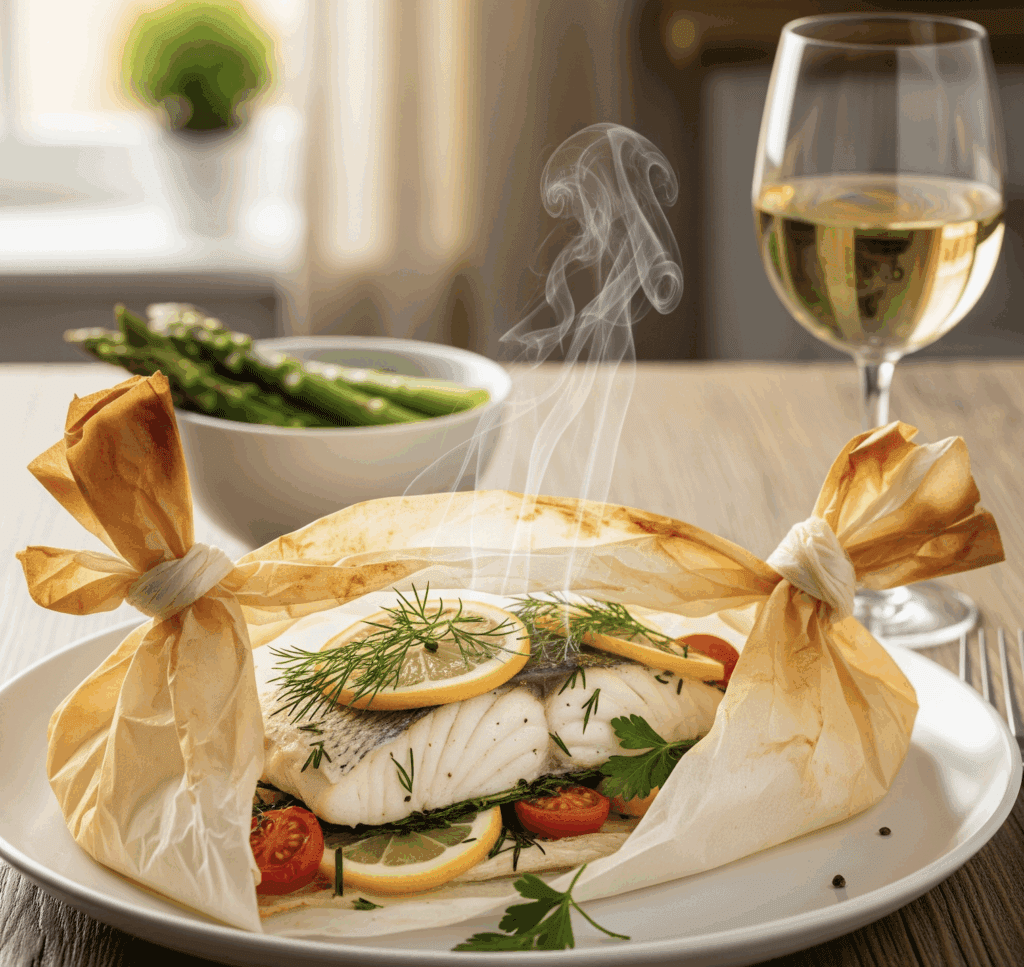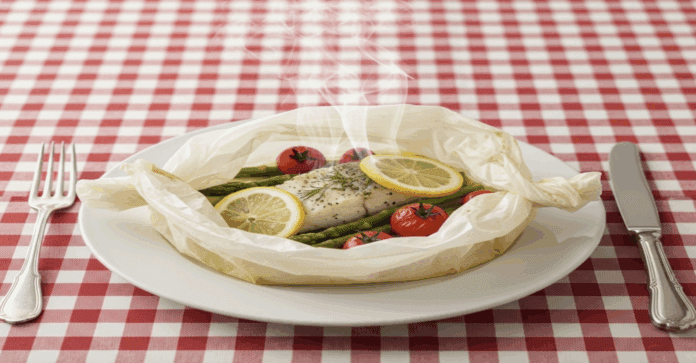Deep Roots of Mediterranean Cuisine
Fish en papillote (riba u škartocu) is deeply rooted in Croatian culinary tradition, particularly along our beautiful Adriatic coastline. This simple yet sophisticated method of preparing fish has been passed down through generations for centuries, preserving the authenticity of flavours and techniques that best respect the natural aroma of fresh seafood. The French call this technique “en papillote”, whilst we know it better as ‘škartoc’ (a bag or parcel made from paper).
Fish en papillote symbolises the marriage of simplicity and elegance. Our grandmothers and grandfathers used this technique not only for its practicality, but also for the way it preserves all the nutrients and natural juices of the fish, creating a dish that is both healthy and irresistibly delicious.

A Tradition That Travels the World
Australian Croatians, surrounded by oceans rich with fish, quickly adapted the traditional technique to local ingredients. Instead of our Adriatic fish, they use Australian salmon, barramundi, or red snapper, combining them with Mediterranean herbs and spices brought from Croatia or purchased from specialised shops.
In Australian Croatian homes, it’s not uncommon to prepare fish en papillote for the whole family. This tradition has become a way for children and grandchildren to learn about their roots, whilst simultaneously enjoying delicacies that combine the best of both worlds.

Modern Interpretation of a Classic Technique
Today’s generations of Croatians, whether in the homeland or diaspora, adapt the traditional preparation to contemporary needs. Instead of classic parchment paper, some use special cooking bags, whilst others remain faithful to the original method with parchment paper.
The key to success still lies in selecting fresh ingredients, careful seasoning, and respecting cooking times that allow the fish to steam in its own juices.
Traditional Recipe for Fish en Papillote

Ingredients (serves 4):
- 4 fish fillets or steaks (approximately 150-200g per person) – ideally sea bream, sea bass, or local Australian fish
- 2 sheets of parchment paper (large format)
- 2 lemons (sliced into rounds)
- 300g cherry tomatoes (halved)
- 1 red pepper (cut into strips)
- 1 yellow pepper (cut into strips)
- 1 large red onion (sliced into rings)
- 100g black olives (pitted)
- 2 tablespoons capers
- 4 tablespoons quality extra virgin olive oil
- Coarse sea salt to taste
- Freshly ground black pepper
- Fresh thyme or parsley
- 1 egg (for brushing the paper)
Method:
- Prepare the oven: Preheat the oven to 175°C.
- Prepare the fish: Pat the fish dry with kitchen paper and season with coarse sea salt and freshly ground pepper on both sides.
- Prepare the vegetables: Cut all vegetables into roughly equal pieces so they cook evenly.
- Create the parcel: Place a large sheet of parchment paper on your work surface. Place the fish fillets or steaks in the centre.
- Add flavour: Arrange the lemon slices over the fish, then distribute the tomatoes, peppers, onion, olives, and capers around the fish. Drizzle with olive oil and sprinkle with fresh herbs.
- Seal the parcel: Lightly brush the edges of the parchment paper with beaten egg. Cover with the second sheet of paper and carefully seal the edges, creating a hermetically sealed parcel.
- Bake: Place on a baking tray and bake for 25-30 minutes, depending on the thickness of the fish.
- Serve: Carefully open the parcel (mind the hot steam!), transfer the fish to a plate, and pour over the juices from the parcel.
Tips for Perfect Fish en Papillote

- Fish selection: Use fresh fish 2-3cm thick for best results
- Vegetables: Add harder vegetables (carrots, potatoes) a few minutes earlier or cut them thinner
- Seasonings: Experiment with Croatian herbs such as lavender, rosemary, or oregano
- Liquid: Add a tablespoon of white wine for additional depth of flavour
The essence of Mediterranean cuisine and the warmth of the Croatian home
Fish en papillote is more than just a dish – it’s a tradition that connects generations and continents. Whether prepared in a Dalmatian kitchen overlooking the Adriatic or in an Australian backyard to the sounds of the didgeridoo, this simple preparation method preserves the essence of Mediterranean cuisine and the warmth of the Croatian home.
In each parcel lies a story of tradition, love for good food, and the desire to pass on the best of our culture. Fish en papillote thus becomes a symbol that bridges past and future, homeland and new home, bringing families together around one table.

